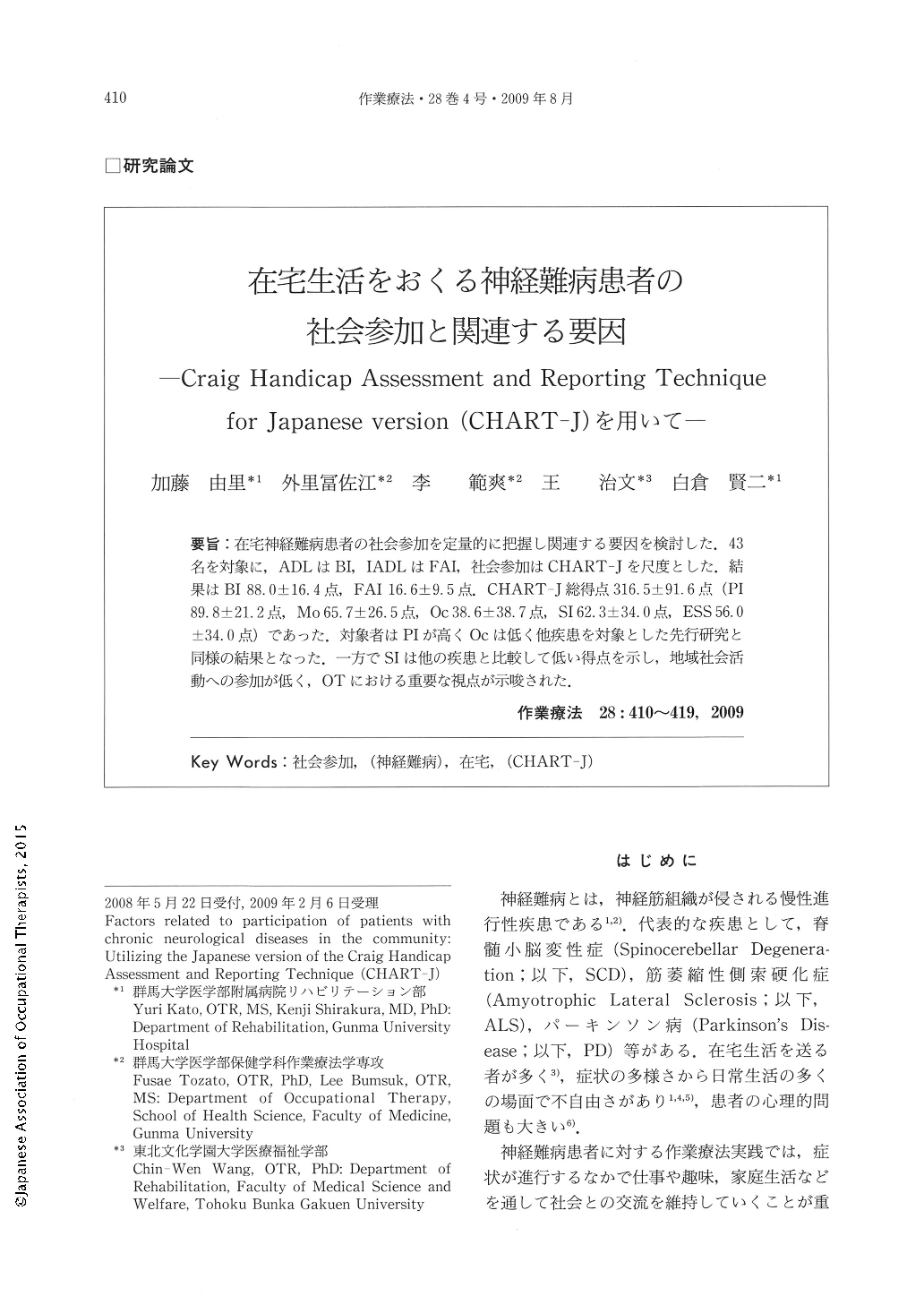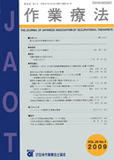Japanese
English
- 販売していません
- Abstract 文献概要
- 1ページ目 Look Inside
- 参考文献 Reference
- サイト内被引用 Cited by
要旨:在宅神経難病患者の社会参加を定量的に把握し関連する要因を検討した.43名を対象に,ADLはBI,IADLはFAI,社会参加はCHART-Jを尺度とした.結果はBI88.0±16.4点,FAI16.6±9.5点.CHART-J総得点316.5±91.6点(PI89.8±21.2点,Mo65.7±26.5点,Oc38.6±38.7点,SI62.3±34.0点,ESS56.0±34.0点)であった.対象者はPIが高くOcは低く他疾患を対象とした先行研究と同様の結果となった.一方でSIは他の疾患と比較して低い得点を示し,地域社会活動への参加が低く,OTにおける重要な視点が示唆された.
The purpose of this study was to clarify social participation of patients with chronic neurological diseases in the community using the Japanese version of the Craig Handicap Assessment and Reporting Technique. Participants were twenty-three men and twenty women (age 63.1 ± 11.4 yrs) with neuromuscular disease (five with spinocerebellar degeneration, 21 with Parkinson's disease, five with amyotrophic lateral sclerosis, and two others). The main Outcome Measures were medical condition, motor function, performance in basic activities of daily living (the Barthel Index ; BI), instrumental activities of daily living (the Franchey Activity Index; FAI) and level of participation (the revised Japanese version of Craig Handicap Assessment and Reporting Technique I CHART-J). The BI score was 88.0± 16.4 points, and the FAI score was 16.6±9.5 points. The CHART-J subscores were as follows: Physical independence (PI) was 89.8 ±21.2 points, Mobility (Mo) was 65.7 + 26.5 points, Occupation (Oc) was 38.6±38.7 points, Social integration (SI) was 62.3 ±34.0 points and Economic Self-Sufficiency (ESS) was 56.0±34.0 points. Compared with previous studies on stroke survivors and spinal cord injuries in the community, there were similar trends in both studies: the mean PI score was high and the mean Oc score was low, although our patients scored lower in the SI sub score. Therefore, participants in our study had limited exchange of personnel between societies. This study suggests that approaches to participation, particularly patients' relationship with relatives and community, employment, housework and hobbies, are important to occupational therapy for neuromuscular disease patients.

Copyright © 2009, Japanese Association of Occupational Therapists. All rights reserved.


